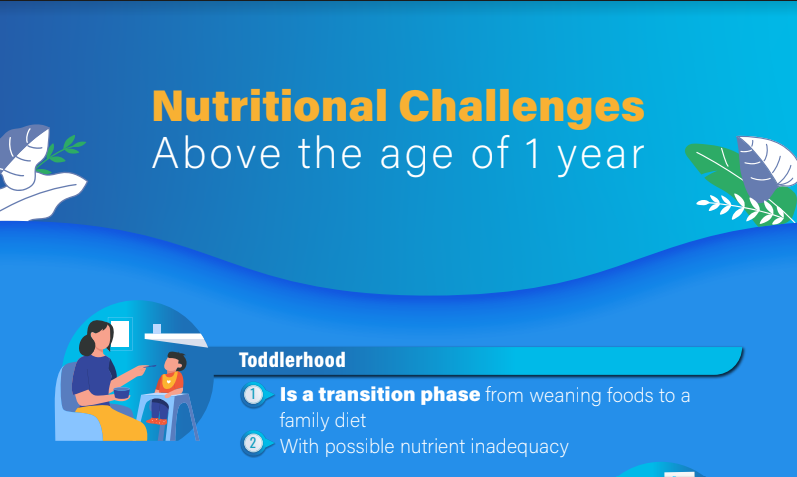Breastfeeding: an investment in health
Early initiation of breastfeeding within 1 hour of birth protects the newborn from acquiring infections & reduces newborn mortality.
Infants who are breastfed have reduced risks of:
- Asthma
- Obesity
- Type 1 diabetes
- Severe lower respiratory disease
- Acute otitis media (ear infections)
- Sudden infant death syndrome (SIDS)
- Gastrointestinal infections (diarrhea/vomiting)
- Necrotizing enterocolitis (NEC) for preterm infants

Breastfeeding also stimulates an infant’s immune system and response to vaccination and, according to some studies, confers cognitive benefits as well.
Breastfeeding is not just good for babies, it can also reduce the risk for certain health conditions for mothers.
In fact, it has been shown to protect mothers against:
- Haemorrhage
- Postpartum depression
- Ovarian and breast cancer
- Heart disease
- Type 2 diabetes
For the first six months of life, breast milk alone is the ideal nourishment, providing all of the nutrients, including vitamins and minerals, an infant needs.
Mothers are encouraged to exclusively breastfeed during the first 6 months of life with continued breastfeeding along with appropriate complementary foods up to 2 years of age.
* CDC’s Work to support & promote Breastfeeding. https://www.cdc.gov/breastfeeding/pdf/breastfeeding-cdcs-work-508.pdf
* WHO. Breastfeeding. https://www.who.int/health-topics/breastfeeding#tab=tab_2
* Martin C.R., Ling P-R and Blackburn G.L. Review of Infant Feeding: Key Features of Breast Milk and Infant Formula. Nutrients 2016, 8, 279
* Cai et al. Global trends in exclusive breastfeeding. International Breastfeeding Journal 2012, 7:12

Weaning
When to wean is a personal decision and will be different for everyone. Each child may be ready to wean, or stop breastfeeding, at different ages. Some children will gradually start to show more interest in eating solid foods and less interest in breastfeeding. Others may want to stop breastfeeding more suddenly. Each mother may be be ready to wean at different times too. This is also a personal decision.
Around the age of 6 months, an infant’s need for energy and nutrients starts to exceed what is provided by breast milk, and complementary foods are necessary to meet those needs. An infant of this age is also developmentally ready for other foods. If complementary foods are not introduced around the age of 6 months, or if they are given inappropriately, an infant’s growth may falter.
Guiding principles for appropriate complementary feeding:
- Continue frequent, on-demand breastfeeding.
- Practice responsive feeding (for example, feed infants directly and assist older children. Feed slowly and patiently, encourage them to eat but do not force them, talk to the child and maintain eye contact.
- Practice good hygiene and proper food handling.
- Start at 6 months with small amounts of food and increase gradually as the child gets older.
- Gradually increase food consistency and variety.
- Increase the number of times that the child is fed: 2–3 meals per day for infants 6–8 months of age and 3–4 meals per day for infants 9–23 months of age, with 1–2 additional snacks as required.
- Use fortified complementary foods or vitamin-mineral supplements as needed.
- During illness, increase fluid intake including more breastfeeding, and offer soft, favourite foods.
* Infant and young child feeding. June 2021. https://www.who.int/news-room/fact-sheets/detail/infant-and-young-child-feeding
Weaning.CDC.https://www.cdc.gov/nutrition/InfantandToddlerNutrition/breastfeeding/weaning.html
Toddler nutrition
Toddlerhood is a transition phase from weaning foods to a family diet.
During this phase, young children are prone to nutrient inadequacy due to early weaning and/or abandonment of milk formula and consumption of unbalanced diets.
MyPlate is an easy-to-follow food guide to help parents figure out how to feed their kids. It organizes foods with similar nutritional value into specific food groups and provides recommendations about how to build a healthy diet.
In 2011, MyPlate was put out by the USDA (US Department of Agriculture) as a general guide to specify the food group targets for every person including infants, toddlers and pre-schoolers: what and how much to eat every day.
Young children consume small quantities of food, so it’s important to MAKE EVERY BITE COUNT!
It is known to be simpler and more direct than the Food Pyramid.
MyPlate is divided into 5 sections
1. Vegetables
2. Fruits
3. Grains
4. Protein
5. Dairy


